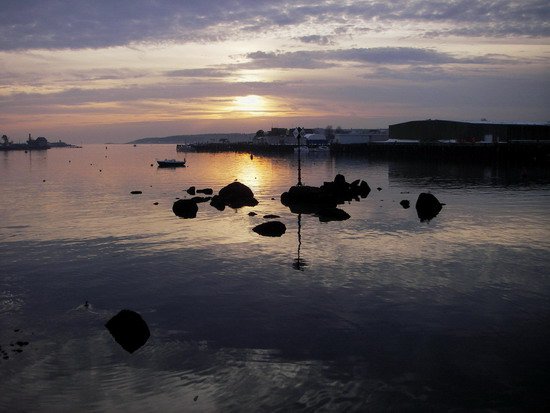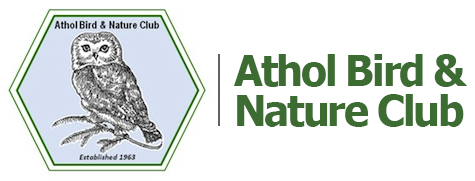
View from Jodrey Pier, Gloucester, MA – photo by Joan Duprey, (January 2011)
On February 13, the Club sponsored a trip to Cape Ann, led by Ernie LeBlanc. As many know, Cape Ann in the winter can be a cold and windy experience, and this day met expectations. In addition to the wind and cold, snow persisted during the entire outing, limiting the observation distance. Despite this, four participants braved the weather and enjoyed a productive day of bird sightings, 42 species in total. Not what would be expected for a clear day, but fun none-the-less.
The trip started at Gloucester Harbor, where Common Eiders, Red-breasted Mergansers, Surf Scoters, Buffleheads, Common Goldeneyes and several other species were observed.
A stop at Jodrey Pier found both Lesser and Greater Scaup, and demonstrated the difficulty in identifying sleeping scaup with their heads tucked in. As in most of our stops, we observed Red-breasted Mergansers, Common Eiders, Surf Scoter, and Long-tailed Duck. Because the pier is the docking area of many fishing boats, gulls were in abundance, with Herring, Ring-billed, and Great black-backed Gulls in good numbers. We did not spot Iceland or Glaucous Gull.
Eastern Point produced the best sighting – a Thick-billed Murre. This uncommon alcid, was relatively close to us and we were able to note key identifying features.
At the Granite Pier, elevated, windy, and snowy, we found our first Harlequin Ducks, the drakes notable for their beautiful colors and prominent markings. The coast of Cape Ann has numerous rock outcroppings along the shore. A thorough search of a nearby rock island turned up our only Purple Sandpiper.
One of our final stops was Andrews Point, a location noted for many ducks and other sea birds. For a little variety, at our parking area we saw a number of land birds, including Yellow-rumped Warber, Carolina Wren, Robin, White-breasted Nuthatch, White-throated Sparrow, to name a few. The view of the ocean didn’t disappoint, with at least 45 Harlequin Ducks, and our first Black Scoters. In fact, we saw all three scoters at this location – White-winged, Surf, and Black. Several Common Loons were present along with a couple of Horned Grebes.
A final stop at the Locust Grove Cemetery, which has a trail leading to the ocean, failed to yield a King Eider, which had been seen on previous days. The group decided it was a good place to end the trip.
Field Trip Report by Ernie LeBlanc
